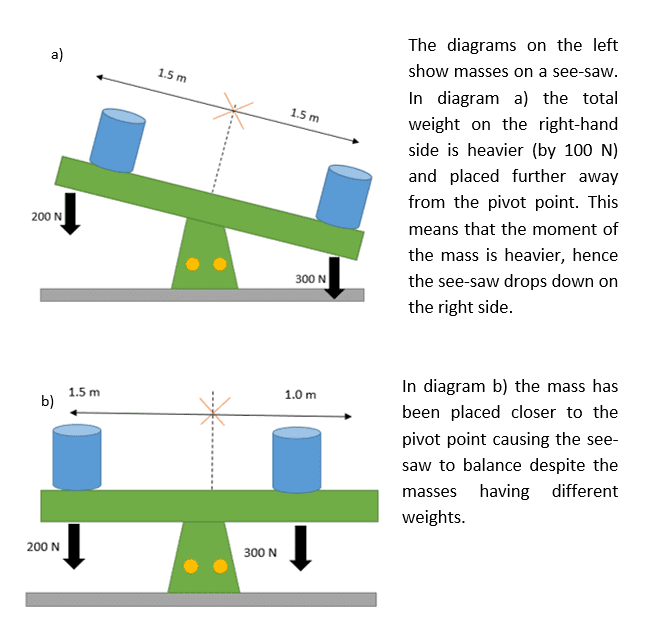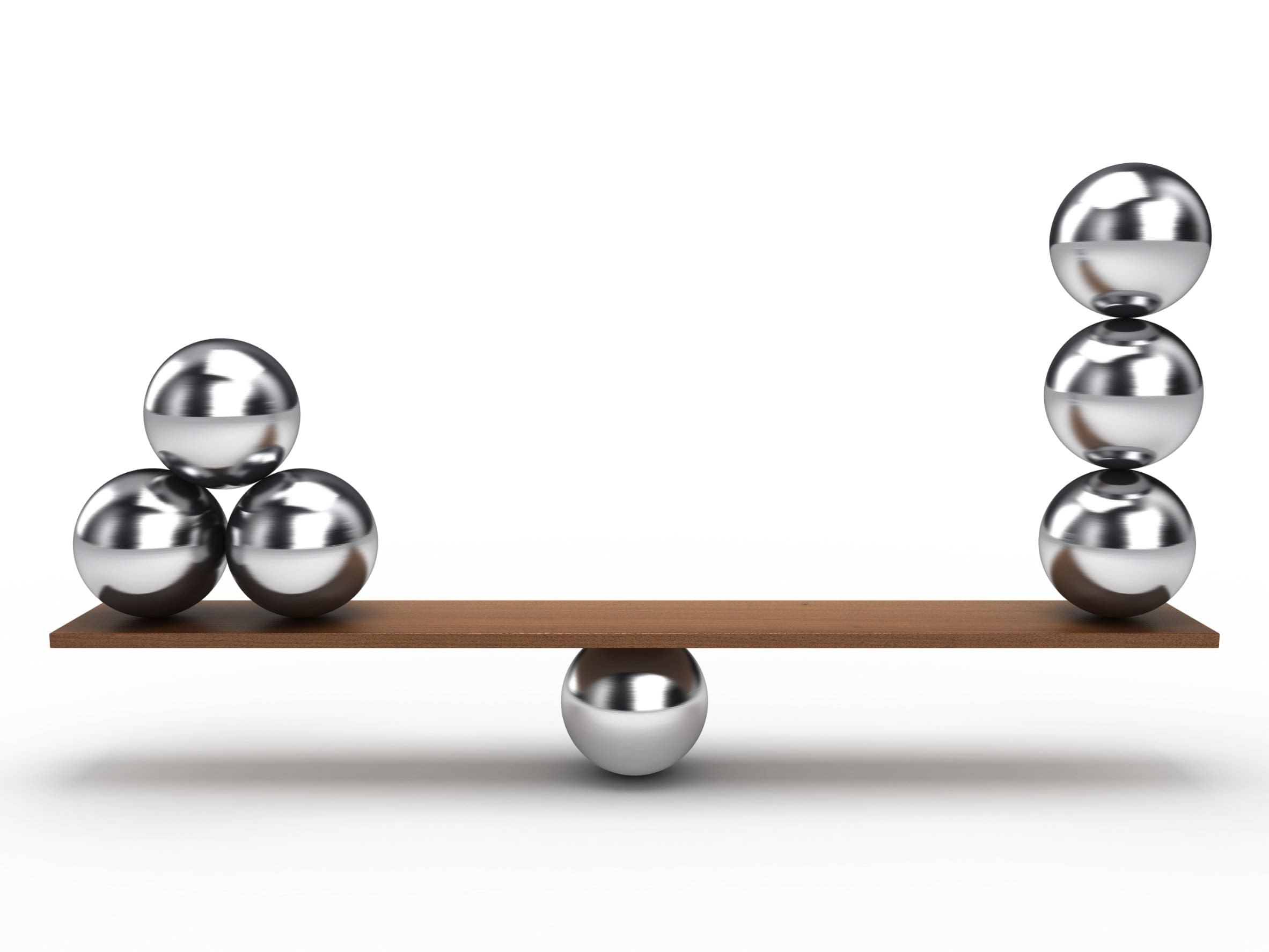In this post
Two important key terms that may crop up in the exam are ‘pivot’ or ‘fulcrum’. These are both words for the fixed point that the forces work at to ensure an object turns or balances. You could think of this as a see-saw. The middle is fixed as the ends move and balance depending on the weight applied. The turning effect of force from a pivot or a fulcrum is called its moment. This means that the equation we use is defined as below.
![Rendered by QuickLaTeX.com \[ \text{moment} = F \times d \]](https://b3801007.smushcdn.com/3801007/wp-content/ql-cache/quicklatex.com-98060179d23c8d04cbba5e8e626283a0_l3.png?lossy=2&strip=1&webp=1)
where F is the force (in Newtons) and d is the perpendicular distance from the pivot (in metres)
You must know and be able to use this equation as it is not provided in the exam.
Movement of force can be measured in Newton metres (Nm) as force is always measured in Newtons and the distance to the pivot point is measured in metres.

Example
A spanner is used to unscrew a nut using a turning force of 30 N. The spanner is 8 cm away from the centre of the nut. Calculate the moment of the force when the spanner is horizontal.
To begin with, we will need to convert the distance from centimetres into metres. 8cm / 100 = 0.08m. Now we can use the equation:
![Rendered by QuickLaTeX.com \[ \text{moment} = F \times d \]](https://b3801007.smushcdn.com/3801007/wp-content/ql-cache/quicklatex.com-98060179d23c8d04cbba5e8e626283a0_l3.png?lossy=2&strip=1&webp=1)
![Rendered by QuickLaTeX.com \[ \text{moment} = 30 N \times 0.08 m = 2.4 Nm \]](https://b3801007.smushcdn.com/3801007/wp-content/ql-cache/quicklatex.com-0bc463451ae192b71de5374b530658a3_l3.png?lossy=2&strip=1&webp=1)
Balancing moments
If an object is not on a pivot when turning around, the clockwise moment must be balanced exactly by the anti-clockwise moment. This is known as the opposing moments being balanced.
Sum of clockwise moment = sum of anti-clockwise moment
We can take the example of a see-saw and investigate this theory.

Using the information from the diagrams, we can work out the clockwise and anti-clockwise moment.
For diagram a)
The anti-clockwise moment would be 200 N x 1.5 m = 300 Nm
The clockwise moment would be 300 N x 1.5 m = 450 Nm
The see-saw is unbalanced and tips to the right due to the weight of the mass and the larger value for moment.
In diagram b)
The anti-clockwise moment = 200 N x 1.5 m = 300 Nm
The clockwise moment = 300 N x 1.0 m = 300 Nm
The see-saw is now balanced as both moments are equal at 300 Nm
Upward forces on a light beam
Newton’s third law tells us that whenever two objects interact with each other they always exert forces on each other and that these forces are equal in size but opposite in direction. Imagine we have a light beam of wood which is held in place over two springs, one at either end of the plank. If a heavy object was placed on the beam in the middle it would exert a force down onto the springs. The amount of force exerted on each of the springs would be equal if the mass was placed directly in the middle. For example, a 100 kg mass was placed onto the beam at the mid-point exerts a downwards force of weight with a magnitude of 1000 N. The two springs would both exert a reaction force pushing up against the beam. As the mass is placed directly in the middle of the two springs, each spring exerts the same amount of force. They would each exert 1000N/2 = 500N.
If the mass was then moved towards the left side of the beam, the left spring would have more weight exerted onto it, which would mean that it would then exert more reaction force up onto the beam. The right spring would have less weight exerted onto it and would therefore exert less reaction force onto the beam.



